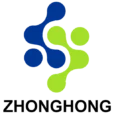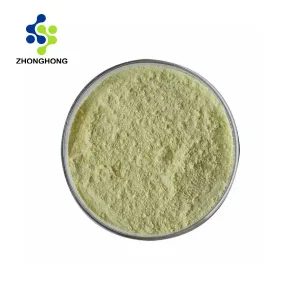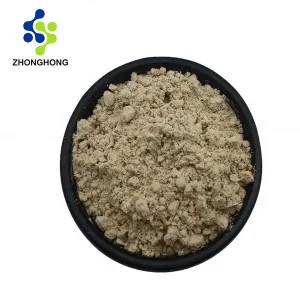Genistein: The Premier Soy Isoflavone for Well being & Innovation| Supplier & Manufacturer
1. What is Genistein?
Genistein (5,7-dihydroxy-3-(4-hydroxyphenyl)-4H-1-benzopyran-4-one) is a potent, biologically lively isoflavone phytoestrogen predominantly present in legumes, particularly soybeans (Glycine max) and kudzu (Pueraria lobata). It capabilities as a selective estrogen receptor modulator (SERM), interacting primarily with estrogen receptor beta (ERβ), and displays vital antioxidant, anti-inflammatory, and tyrosine kinase inhibitory actions. Its distinctive molecular construction underpins its various well being advantages and analysis curiosity.
2. Product Supply, Chemical Properties & Identifiers
-
Major Supply: Soybeans (Germ & Cotyledon), Kudzu Root, Fava Beans, Crimson Clover.
-
Chemical Properties:
-
Appearance: Off-white to pale yellow crystalline powder.
-
Solubility: Soluble in DMSO, DMF; sparingly soluble in ethanol, methanol; insoluble in water, non-polar solvents.
-
Stability: Delicate to gentle, warmth, and oxidation. Retailer desiccated at -20°C.
-
-
Key Identifiers:
-
CAS Quantity: 446-72-0
-
Molecular Components (MF): C₁₅H₁₀O₅
-
Molecular Weight (MW): 270.24 g/mol
-
EINECS Quantity: 207-174-9
-
3. Discovering the Finest Genistein: Efficiency, Benefits & Security
-
“Finest” Definition: The optimum genistein product prioritizes distinctive purity (><|finish▁of▁pondering|> sometimes >98%), verified absence of dangerous solvents/heavy metals/microbes, standardized quantification (HPLC), and traceable sourcing (Non-GMO soy most well-liked). Excessive purity ensures constant organic exercise and security.
-
Highest Content Supply: Soy germ sometimes yields the very best focus of genistein aglycone and its precursors (genistin). Refined extraction focuses on maximizing aglycone yield for superior bioavailability.
-
Well being Benefits & Mechanisms:
-
Bone Well being: Mimics estrogen’s bone-protective results, stimulates osteoblast exercise, inhibits osteoclasts, aiding osteoporosis prevention. (Mechanism: ERβ agonism, modulation of OPG/RANKL pathway).
-
Cardiovascular Help: Improves endothelial perform, reduces LDL oxidation, displays gentle vasodilatory results. (Mechanism: Antioxidant, eNOS activation, anti-inflammatory).
-
Menopausal Symptom Aid: Alleviates scorching flashes, evening sweats through ERβ modulation in thermoregulatory facilities, with out stimulating breast/uterine tissue like ERα agonists.
-
Antioxidant & Anti-inflammatory: Scavenges ROS/RNS, inhibits pro-inflammatory cytokines (TNF-α, IL-6) and enzymes (COX-2, iNOS). (Mechanism: NF-κB pathway inhibition).
-
Mobile Well being & Analysis Areas: Modulates apoptosis, cell cycle development, angiogenesis (tyrosine kinase inhibition – e.g., EGFR, VEGFR), telomerase exercise. Studied in oncology (adjuvant potential), neurology, metabolic well being.
-
-
Typical Each day Consumption: 40-100 mg for focused advantages. Decrease doses (15-30mg) typically discovered usually soy isoflavone complexes. At all times seek the advice of a healthcare supplier for personalised dosing.
-
Precautions & Aspect Results:
-
Contraindications: Estrogen-sensitive circumstances (breast/uterine/ovarian most cancers historical past, endometriosis), being pregnant/lactation (theoretical considerations), pediatric use. Thyroid problems (potential interplay with levothyroxine absorption/TPO exercise – monitor).
-
Potential Interactions: Blood thinners (warfarin – theoretical), tamoxifen (advanced interplay – keep away from concurrent use). CYP450 modulation potential (primarily weak inhibitor).
-
Aspect Results: Typically well-tolerated. Delicate GI upset doable at excessive doses. Theoretical considerations about long-term, high-dose estrogenic results require ongoing analysis.
-
High quality Crucial: Low-purity merchandise danger contamination (solvents, heavy metals) or inconsistent efficiency, negating advantages or inflicting hurt.
-
4. Introducing Shaanxi Zhonghong Investment Technology Co., Ltd.
A trailblazing high-tech enterprise (Est. 1997), Shaanxi Zhonghong integrates agile R&D, collaborative innovation, precision manufacturing, and world distribution. We concentrate on superior extraction, isolation, and purification of bioactive plant constituents for various sectors: nutraceuticals, prescribed drugs, cosmeceuticals, pure pigments, and sweeteners.
-
Unmatched Scientific Rigor:
-
Analysis Fortress: Strategic alliances with 5 elite universities powering devoted joint labs.
-
IP Portfolio: Protected by 20+ patents and a proprietary world compound library.
-
-
Reducing-Edge Infrastructure:
-
Analytical Prowess: ISO 17025 accredited lab that includes UHPLC-DAD/ELSD/CAD, GC-MS, ICP-MS, and superconducting NMR (Bruker Avance collection) for definitive structural elucidation and quantification.
-
Purity Benchmark: Routinely obtain purity ranges exceeding business requirements by >20% through proprietary chromatographic strategies (prep-HPLC, HSCCC).
-
-
International Attain: Trusted B2B supplier throughout 80+ international locations, delivering bespoke, licensed substances to multinational pharma, prestigious analysis establishments, and main complement manufacturers.
5. Genistein Specs (Exemplary High quality – Zhonghong Commonplace)
| Class | Mission Name | Specification (Restrict) | Take a look at Methodology (Pharmacopoeia/ISO) |
|---|---|---|---|
| Pesticides | Whole Organochlorines | ≤ 0.05 mg/kg | GC-ECD (USP <561>) |
| Whole Organophosphates | ≤ 0.05 mg/kg | GC-FPD/NPD (USP <561>) | |
| Pyrethroids | ≤ 0.05 mg/kg | GC-ECD (USP <561>) | |
| Chlorpyrifos | ≤ 0.01 mg/kg | GC-MS/MS (EU 396/2005) | |
| Glyphosate (AMPA) | ≤ 0.10 mg/kg | HPLC-FLD (AOAC 2008.01) | |
| Heavy Metals | Lead (Pb) | ≤ 1.0 mg/kg | ICP-MS (USP <232>/ICH Q3D) |
| Arsenic (As) | ≤ 1.0 mg/kg | ICP-MS (USP <232>/ICH Q3D) | |
| Cadmium (Cd) | ≤ 0.5 mg/kg | ICP-MS (USP <232>/ICH Q3D) | |
| Mercury (Hg) | ≤ 0.1 mg/kg | ICP-MS/CVAAS (USP <232>/ICH Q3D) | |
| Microbiology | Whole Cardio Rely | ≤ 1000 CFU/g | USP <61>, EP 2.6.12 |
| Whole Yeast & Mildew | ≤ 100 CFU/g | USP <61>, EP 2.6.12 | |
| E. coli | Detrimental / 10g | USP <62>, EP 2.6.13 | |
| Salmonella spp. | Detrimental / 25g | USP <62>, ISO 6579-1 | |
| Staphylococcus aureus | Detrimental / 1g | USP <62> | |
| Pseudomonas aeruginosa | Detrimental / 1g | USP <62> | |
| Key Assay | Genistein Content (HPLC) | ≥ 98.0% | In-house USP/EP validated HPLC-UV |
6. Superior Manufacturing Course of
Zhonghong employs a validated, multi-stage cGMP-compliant course of:
-
Sourcing & QC: Premium Non-GMO soy germ procurement with COA overview and id affirmation (HPTLC, macroscopic/microscopic).
-
Extraction: Optimized solvent extraction (e.g., ethanol/water) beneath managed T, P, pH to maximise aglycone yield.
-
Hydrolysis: Enzymatic (β-glucosidase) or acid hydrolysis to transform genistin to bioactive genistein aglycone.
-
Major Purification: Macroporous resin chromatography (AB-8, D101) for desalting and preliminary enrichment.
-
Excessive-Decision Purification: Preparative HPLC or HSCCC for isolation of genistein fraction, reaching >98% purity.
-
Crystallization: Managed crystallization for particle dimension distribution and enhanced stability.
-
Drying: Lyophilization (freeze-drying) or vacuum belt drying to protect efficiency and reduce thermal degradation.
-
Remaining QC & Launch: Complete testing in opposition to stringent specs (Identification by NMR/FTIR, Assay/HPLC, Residual Solvents/GC, Heavy Metals/ICP-MS, Micro/MLT).
7. Application Scenarios
-
Nutraceuticals: Bone well being formulation, menopause assist complexes, antioxidant blends, cardiovascular dietary supplements (capsules, tablets, softgels).
-
Prescription drugs: Investigational new medication (INDs) for oncology, osteoporosis, metabolic syndrome; API intermediate.
-
Cosmeceuticals: Anti-aging serums/lotions (antioxidant, collagen stimulation), hair development tonics (5α-reductase inhibition).
-
Practical Meals & Drinks: Fortified soy milk, well being bars, sports activities diet (requires solubility enhancement tech).
-
Analysis Reagents: Cell tradition research, enzyme inhibition assays, molecular biology (high-purity grade important).
8. Stringent High quality Management
Zhonghong’s high quality paradigm is constructed on QbD (High quality by Design) ideas and a complete High quality Administration System (QMS) adhering to ISO 9001, ISO 22000, and cGMP pointers. Uncooked Materials Qualification: Rigorous id testing (Botanical, HPTLC, DNA barcoding the place relevant), contaminant screening (pesticides, heavy metals, microbes), and exercise marker evaluation precedes launch. Course of Validation: All essential course of parameters (CPP – e.g., extraction T/P/time, hydrolysis pH/period, chromatography stream charges/gradients) are outlined and managed inside validated ranges to make sure constant Crucial High quality Attributes (CQA – Purity, Efficiency, Residual Solvents, Contaminants). In-Course of Controls (IPC): Actual-time monitoring through PAT (Course of Analytical Expertise – e.g., in-line NIR spectroscopy for solvent focus, HPLC sampling) permits rapid corrective actions. Stability Research: ICH Q1A(R2) compliant accelerated and long-term stability research (25°C/60percentRH, 40°C/75percentRH) decide shelf-life (sometimes 24-36 months) and storage circumstances. Analytical Methodology Validation: All check strategies (HPLC-UV/ELSD for assay, GC-FID/MS for solvents, ICP-MS for metals, Ph. Eur./USP for micro) are totally validated per ICH Q2(R1) for specificity, accuracy, precision (repeatability, intermediate precision), linearity, vary, LOD/LOQ, and robustness. Documentation & Traceability: Full batch data, digital information seize (LIMS), and COA issuance guarantee full traceability from farm to buyer. Steady Enchancment: Common audits, CAPA (Corrective and Preventive Motion) system, and technique optimization assure ongoing high quality enhancement.
9. Safe Packaging & International Logistics
-
Major Packaging: Meals-grade HDPE bottles with induction-sealed tamper-evident caps, or double polybags inside fiber drums (bulk). Amber glass vials for light-sensitive analysis portions. All embody desiccant.
-
Secondary Packaging: Strong export cartons assembly ISTA 3A requirements.
-
Labeling: Compliant with vacation spot rules (INCI, CAS#, Batch#, Expiry, Storage Circumstances, GMO Standing, Allergens).
-
Storage: -20°C desiccated for long-term stability; short-term at 2-8°C.
-
Logistics: Experience in world cold-chain transport (2-8°C most well-liked), hazardous items documentation (if relevant), and customs clearance. Actual-time monitoring offered.
10. Deep Dive: Well being, Innovation & Analysis
-
Well being Mechanisms: Past SERM exercise, genistein modulates key signaling pathways: PI3K/Akt (survival/apoptosis), MAPK (proliferation/differentiation), NF-κB (irritation), Nrf2 (antioxidant response), Wnt/β-catenin (bone formation). It inhibits topoisomerase II and DNA methyltransferases (epigenetic results).
-
Trade Functions: Dominates in ladies’s well being dietary supplements. Rising use in sports activities diet (restoration, antioxidant), pet well being (canine osteoarthritis), and dermatology (topical anti-aging). Demand for high-purity (>99%) GMP-grade materials for pharma rising.
-
Analysis Frontiers:
-
Oncology Adjuvant: Enhancing chemo/radiotherapy efficacy whereas decreasing toxicity (breast, prostate).
-
Neuroprotection: Alzheimer’s (Aβ modulation, anti-inflammatory), Parkinson’s (mitochondrial safety).
-
Metabolic Well being: Insulin sensitivity (PPARγ modulation), NAFLD administration.
-
Intestine Microbiome: Interplay with intestine microbiota for metabolite manufacturing (equol) influencing systemic results.
-
Supply Programs: Overcoming poor bioavailability through nanoparticles (PLGA, liposomes), phospholipid complexes, cyclodextrin inclusion.
-
-
Challenges: Bioavailability optimization, long-term security information at excessive doses (esp. >100mg/day), advanced interactions in multi-component dietary supplements, regulatory harmonization globally.
11. Genistein FAQ
-
Q: Is genistein secure for everybody?
-
A: No. Keep away from if pregnant, breastfeeding, have estrogen-sensitive cancers, or thyroid points with out medical supervision. Seek the advice of your physician earlier than use.
-
-
Q: Does genistein trigger feminization in males?
-
A: At typical supplemental doses (40-100mg), vital results are unlikely. Some research present advantages for prostate well being. Very excessive doses may have results.
-
-
Q: How does Zhonghong guarantee genistein purity?
-
A: By proprietary purification (prep-HPLC/HSCCC), validated QC testing (HPLC-UV, NMR, ICP-MS), and strict adherence to cGMP/ISO requirements.
-
-
Q: Is genistein soluble in water?
-
A: No, genistein has very low aqueous solubility. Formulations typically use solubilizers (cyclodextrins, lipids) or it is delivered in capsules/tablets.
-
-
Q: What is the distinction between genistein and genistin?
-
A: Genistin is the glycoside (sugar-attached) kind. Genistein is the lively aglycone. Enzymes within the intestine convert genistin to genistein, however direct genistein consumption provides increased rapid bioavailability.
-
-
Q: Does cooking destroy genistein?
-
A: Warmth can degrade isoflavones. Fermented soy (tempeh, miso) typically has increased aglycone (genistein) content material than cooked entire beans.
-
12. The place to Purchase Premium Genistein?
Supply pharmaceutical-grade, high-purity Genistein compliant with world requirements immediately from the producer:
-
Contact: Mr. Liao Daohai
-
E mail: liaodaohai@gmail.com
-
Web site: https://www.aiherba.com (Discover full product catalog, specs, and firm capabilities)
13. Conclusion
Genistein stands as a scientifically compelling phytoestrogen with multifaceted well being advantages, notably for bone integrity, menopausal wellness, and mobile protection. Its efficacy and security profile are intrinsically linked to its purity and bioavailability. Shaanxi Zhonghong Investment Technology Co., Ltd., leveraging 28 years of experience, cutting-edge expertise (HPLC, NMR), and rigorous high quality programs, delivers genistein of outstanding purity (>98%) and consistency. Our dedication to research-driven innovation, validated manufacturing processes (cGMP), and world provide chain excellence makes us the trusted companion for premium genistein uncooked materials. For analysis, nutraceutical, or pharmaceutical functions demanding the very best high quality customary, contact Zhonghong at the moment.
14. References
-
PubChem: Genistein (Compound Abstract CID 5280961). Nationwide Library of Medication.
-
Messina, M. (2016). Soy and Well being Replace: Analysis of the Medical and Epidemiologic Literature. Vitamins, 8(12), 754.
-
European Meals Security Authority (EFSA) Panel on Dietetic Merchandise, Diet and Allergy symptoms (NDA). (2015). Scientific Opinion on the substantiation of well being claims associated to soy isoflavones and upkeep of bone mineral density (ID 1655)…. EFSA Journal, 13(11), 4246.
-
The USA Pharmacopeia and Nationwide Formulary (USP-NF). Normal Chapters: <561> Articles of Botanical Origin, <232> Elemental Impurities, <61> Microbiological Examination.
-
Worldwide Convention on Harmonisation (ICH) Pointers: Q2(R1) Validation of Analytical Procedures, Q1A(R2) Stability Testing, Q3D Elemental Impurities.
-
Mortensen, A., et al. (2009). Analytical and compositional features of isoflavones in meals and their organic results. Molecular Diet & Meals Analysis, 53(S2), S266-S309. (Covers evaluation strategies).






评价
There are no reviews yet.